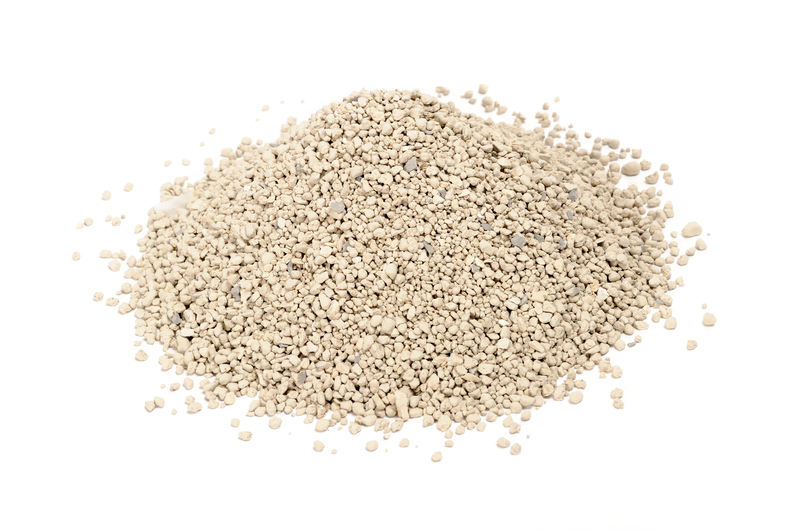Quality air, quality life: Ensuring health through better air
Posted on 14/09/2025
Quality Air, Quality Life: Ensuring Health Through Better Air
Clean air is the foundation of a healthy and vibrant life. The air you breathe significantly influences your physical, mental, and emotional wellbeing, making air quality an issue of both personal and public concern. In this comprehensive article, we will explore why quality air is crucial for life, examine how poor air quality can threaten health, and offer actionable steps to promote better air in your surroundings.
Why Air Quality Matters: The Link Between Clean Air and Health
Every breath you take delivers oxygen to your cells, but contaminated air can also carry harmful substances into your body. Scientific studies have repeatedly shown that high air quality correlates with improved health indicators, while exposure to polluted air increases the risk for numerous diseases and chronic conditions.
The Components of Healthy Air
- Low Particulate Matter (PM2.5 and PM10): The presence of fine particles in the air, often from vehicle emissions, industry, and fires, can penetrate deep into the lungs.
- Minimal Volatile Organic Compounds (VOCs): Substances released from paints, cleaners, and certain building materials.
- Limited Nitrogen Dioxide and Ozone: These gases typically arise from fossil fuel combustion and can irritate the respiratory system.
- Healthy Humidity Levels: Both excessively dry and damp air can cause health issues.
- Absence of Allergens: Pollen, dust mites, and mold spores can exacerbate allergies and asthma.
Ensuring good air quality indoors and outdoors leads to quality life by reducing exposure to these harmful substances.
The Health Effects of Poor Air Quality
Exposure to air pollution, even at low levels, can result in a range of health problems:
- Respiratory diseases like asthma, bronchitis, and chronic obstructive pulmonary disease (COPD).
- Cardiovascular issues such as high blood pressure, heart attacks, and strokes.
- Weakened immune system, making you more vulnerable to infections.
- Neurological effects including cognitive decline, headaches, and mood disorders.
- Long-term risks like lung cancer and developmental problems in children.
It's clear: maintaining high-quality air is essential for living a long, healthy life.

Sources of Air Pollution: Where Does Bad Air Come From?
Understanding the origins of air pollution is the first step toward remediation. These sources fall into two main categories: outdoor (ambient) and indoor air pollution.
Outdoor Air Pollution
- Industrial Activities: Factories, power plants, and refineries release pollutants directly into the air.
- Transportation: Cars, trucks, buses, and planes emit exhaust fumes, including nitrogen oxides and particulates.
- Agriculture: Pesticides, fertilizer dust, and methane emissions from livestock all add to atmospheric contamination.
- Natural Sources: Wildfires, volcanic eruptions, and dust storms occasionally degrade air quality on a regional scale.
Indoor Air Pollution
- Poor Ventilation: Traps moisture, VOCs, and airborne chemicals inside the home.
- Household Products: Cleaning supplies, scented candles, and synthetic furniture can all emit harmful substances.
- Building Materials: New carpets, paints, and adhesives often "off-gas" pollutants for months.
- Cooking: Gas stoves, especially unvented ones, contribute to indoor nitrogen dioxide levels.
- Tobacco Smoke: A well-known source of harmful indoor air compounds.
Both inside and outside, the drive toward better air quality requires identifying these sources and mitigating their impacts.
Monitoring and Assessing Air Quality
Global awareness of the importance of air quality has spurred governments and private organizations to develop tools for monitoring air pollution. Understanding how air is measured can help you interpret air quality data and take action when necessary.
Air Quality Index (AQI)
The AQI is a standardized scale used globally to report air pollution in real time:
- 0-50: Good - Air quality poses little or no risk.
- 51-100: Moderate - Acceptable, but some pollutants may be a concern for sensitive groups.
- 101-150: Unhealthy for Sensitive Groups - Increasing chances of adverse effects for vulnerable people.
- 151-200: Unhealthy - Everyone may begin to experience health effects.
- 201-300: Very Unhealthy - Health warnings of emergencies. The entire population is more likely to be affected.
- 301+: Hazardous - Serious health effects or emergencies for everyone.
You can check the AQI for your area through local environmental agencies, weather apps, or global networks like AirNow.
Personal Air Quality Monitors
Affordable home air quality monitors are now widely available. These devices measure particles, VOCs, and sometimes allergens or gases. Using these, you can identify pollution sources in your home and verify the effectiveness of interventions.
Strategies for Improving Air Quality for a Healthier Life
Whether you're concerned about indoor air quality at home or the ambient air outside, there are practical steps you can take to ensure a higher quality of air and, by extension, a better quality of life.
Enhancing Outdoor Air Quality
- Support Clean Energy: Valuing renewable energy sources, such as wind and solar, helps reduce dependence on polluting fossil fuels.
- Opt for Public Transportation, Cycling, or Walking: Reducing single-passenger car trips cuts emissions significantly.
- Help Plant and Protect Trees: Urban greenery absorbs harmful gases and particulates, improving city air.
- Advocate for Stricter Regulations: Vote and lobby for policies that regulate industrial pollution and vehicle emissions.
- Monitor and Report Local Pollution: Community-driven efforts to report illegal burning, idling, or dumping can spark local improvements.
Improving Indoor Air Quality
- Ventilate Regularly: Whenever possible, open windows to allow fresh air to circulate and dilute indoor pollutants.
- Invest in an Air Purifier: High-efficiency particulate air (HEPA) filters and activated carbon purifiers capture irritants and allergens.
- Switch to Green Household Products: Choose non-toxic, unscented cleaners and reduce indoor chemical use.
- Avoid Smoking Indoors: Ban indoor tobacco use to minimize dangerous particulates and chemicals.
- Control Moisture: Use dehumidifiers and repair leaks to prevent mold growth, a common indoor air hazard.
- Maintain HVAC Systems: Change filters regularly and schedule professional air duct cleaning as needed.
- Use Natural Materials: Select furniture, flooring, and paints with low or no VOCs for safer living spaces.
Emerging Technologies and Innovations for Cleaner Air
Advancements in air purification and monitoring are rapidly transforming the landscape of air quality enhancement. From smart home devices to citywide pollution reduction schemes, innovation is bringing cleaner air within reach:
- Smart Air Purifiers: These devices not only remove particles and chemicals but also link to mobile apps for real-time monitoring and suggestions.
- Green Building Certifications: Programs like LEED and WELL add requirements for indoor air quality, which can influence large-scale architectural choices.
- Electric Vehicles and Clean Transit: Shifting personal and public modes of transport away from gasoline and diesel radically cuts airborne emissions.
- Urban Planning for Clean Air: Cities now design "green corridors" and pedestrian spaces that limit traffic congestion and improve air circulation.
- Community Sensors: Citizens across the globe are installing low-cost air monitoring sensors, crowd-sourcing pollution data and democratizing access to information.
By embracing these breakthroughs, communities create a foundation for sustainable and healthier living in the long term.
The Benefits of Quality Air: Beyond Physical Health
The upsides of maintaining clean air go beyond lowering the risk for disease. Good air quality supports:
- Better sleep: Cleaner air reduces nighttime congestion, enabling more restful sleep cycles.
- Improved mental clarity: Lower pollutant levels have been linked with higher cognitive performance and better mood.
- Increased productivity: Fewer asthma attacks, headaches, and fatigue mean more days spent thriving.
- Healthy child development: Young lungs are highly sensitive to pollution, and cleaner air supports lifelong success.
- Greater longevity: Studies consistently show that populations with better air quality experience increased life expectancy.
Quality life and clean air are inextricably linked--they nourish each other and our futures.

Take Action--Your Role in Ensuring Quality Air for Quality Life
Securing better air is a shared responsibility that starts with individual choices and extends to collective community and global action. You can help ensure quality air by:
- Staying informed about local air quality. Adjust your outdoor activities when pollution peaks.
- Minimizing personal contributions to air pollution--walk, bike, or take public transportation when possible.
- Advocating for clean air policies. Support environmental regulations at the local, state, and national levels.
- Educating others about the importance of air quality. Awareness breeds action.
Conclusion: Breathe Easy and Live Fully
Clean air means a healthier, longer, and happier life. While achieving consistently high air quality requires concerted effort, every measure you take--at home, at work, and in your community--can make a difference. From monitoring and understanding air quality to embracing sustainable practices and advocating for stricter regulations, your actions contribute to a brighter, cleaner, and more vibrant future.
In the journey toward quality air and quality life, each breath can serve as a reminder of our shared responsibility and opportunity to shape a healthier world for ourselves and generations to come. Start today--because better air means better life.





